#freshwater reptiles
Text
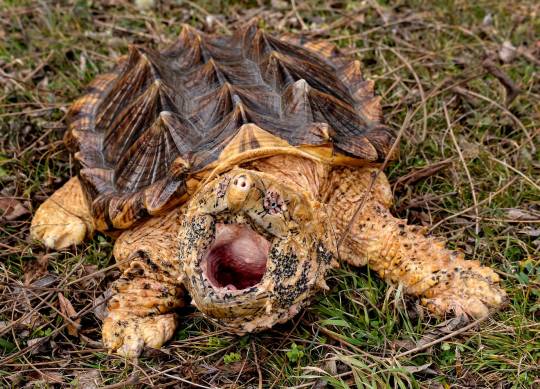


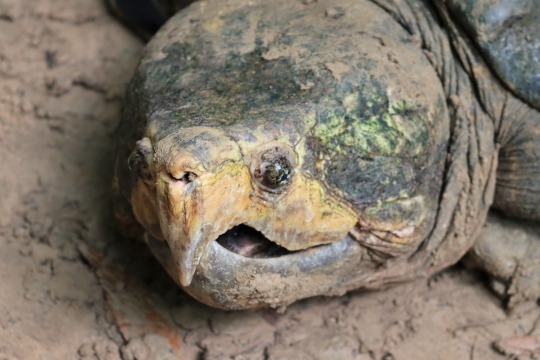
The Stupendous Alligator Snapping Turtle
Alligator snapping turtles (Macrochelys temminkii) are one of three recognised species of snapping turtle, all of which are found in North America. This particular species is found in the southeastern United States and the Mississippi Basin in particular. Macrochelys temminkii prefers deep freshwater, and is especially common in deep rivers, wetlands, and lakes.
The alligator snapping turtle is the largest freshwater turtle in North America, and is one of the heaviest in the world. Most individuals weigh between 70-80 kg (154-176 lbs), and are about 79-101 cm (31-39 in) long. However, the largest verified indiviual weighed over 113 kg (249 lb), and many others have been recorded in excess of 100 kg. The species is easily identifiable by its large, boxy head and thick shell with three rows of raised spikes. Typical alligator snapping urtles are solid black, brown, or olive green, though the shells of many older individuals can be covered in green algae.
M. temminkii is famous for its strong bite, which is most often utilised when feeding. The turtle's tongue resembles a worm, and at night individuals lie on the bottom of the river or lake bed with their mouths open. Fish are enticed by the bait-tongue, and when they get close enough the alligator snapping turtle's mouth clamps down around them. In addition to fish, this species may also feed on amphibians, invertebrates, small mammals, water birds, other turtles, and even juvenile alligators where their territories overlap. The alligator snapping turtle's relies on ambush techniques, and so hunters can remain submerged for up to 40 minutes. In some cases, individuals can also 'taste' the water to detect neaby mud and musk turtles. Because of this species' thick shell and ferocious bite, adults have few predators, but eggs and hatchlings may fall prey to raccoons, predatory fish, and large birds.
This species spends most of its time in the water, only emerging to nest or find a new home if their current habitat becomes unsuitable. Mating occurs between Februrary and May, starting later in the northern regions of the species' range. Males and females seek each other out, but generally don't travel great distances. About two months after mating, females dig a nest near a body of water and deposit between 10-50 eggs. Incubation takes up to 140 days, and the average temperature of the nest determines the sex of the hatchings; the hotter it is, the more males are produced. In the fall, hatchings emerge and are left to fend for themselves. Sexual maturity is reached at between 11 and 13 years of age, and individuals can live as old as 45 years in the wild.
Conservation status: The alligator snapping turtle is listed as Vulnerable by the IUCN. The species is threatened by overharvesting for meat and for the pet trade, and by habitat destruction.
If you like what I do, consider leaving a tip or buying me a ko-fi!
Photos
Ed Godfrey
Cindy Hayes
Eva Kwiatek
Nathan Patee
#alligator snapping turtle#Testudines#Chelydridae#snapping turtles#freshwater turtles#reptiles#freshwater fauna#freshwater reptiles#lakes#lake reptiles#wetlands#wetland reptiles#rivers#river reptiles#north america#southern north america#animal facts#biology#zoology
455 notes
·
View notes
Text
Wet Beast Wednesday: alligator snapping turtle
This will be a shorter WBW than usual, as I forgot to prep a post in advance and am writing this on short notice. Today's topic is the alligator snapping turtle, a beast from the bayou almost looks like a dinosaur. Macrochelys temminckii is the only member of its genus and, along with the three members of the genus Chelydra, is one of the four living snapping turtle species. Some scientists suggest splitting it into three species, but this is still a matter of debate. Snapping turtles are large, predatory turtles known for their very sharp beaks, extreme bite forces, and alleged aggressiveness.

(Image ID: an alligator snapping turtle sitting on gravel. It is a large, brown turtle. Its shall has three spiked ridged running down it. The head is large and angular, with a very sharp beak. It has small, brown eyes. Its mouth is open in a threat display. End ID)
The alligator snapping turtle is one of the largest freshwater turtles in the world, surpassed only by a few species of rare Asian softshells. The alligator snapping turtle can be distinguished from the common snapping turtle, whose range overlaps with that of the alligator snapping turtle, by the three spiky ridges going down its shell. These ridges, along with its powerful jaws, are often compared to those of an alligator, hence the common name. The turtles grow through their entire lives and can reach truly huge sizes. In the wild, adult males (who are larger than females) range between 35 and 80.8 cm (13.8 to 31.8 in) in caprapace (top shell) length and weigh between 8.4 and 80 kg (19 to 176 lbs). Sometimes, a true giant will be found, usually an old male. Reported weights of giant males include 113, 107, and 135 kg (249, 236, 298 lbs). The tail is longer and thicker than in most turtles. The head is large and thick and can deliver bites with a force averaging 159 newtons. This is less than the bite force of the common snapping turtle, but still enough to bite someone's finger off. The inside of the mouth is brownish and the tongue has an appendage that looks like a worm on it. Unlike most turtles, the alligator snapping turtle cannot withdraw into its shell. The plastron (lower shell) covers less of the body than in most species and cannot cover retracted limbs, heads, or tails.

(Image ID: a close-up of the head of an alligator snapping turtle with its mouth open. The tongue is visible, which has a pink, fleshy appendage that looks like a worm. End ID)
Alligator snapping turtles live in the southeast USA in rovers, streams, and lakes, preferably with deep water. They spend most of their lives in the water, only leaving if in search of a new home or when laying eggs. They are nocturnal, but may still hunt during the day. The turtles are passive ambush predators who sit perfectly still with their mouths open and tongues exposed. The worm-like appendage on the tongue is used to attract prey, which the turtle will bite down on quickly and with extreme force. This is a form of aggressive mimicry. You may be wondering what they eat and the answer is just about anything. Fish, amphibians, and snails appear to be the most common prey, but they will also feed on crayfish, insects, snakes, worms, birds, small mammals, other turtles, and even small alligators. Basically if it can fit in the turtle's mouth, it will be eaten. While not active predators, they will dig up burrows in search of food. They also feed on carrion and will sometimes eat aquatic plants. A turtle can go 50 minutes between breaths and they sit still so much that most individuals will have a thick layer of algae growing on their shells. The algae helps them camouflage as rocks when not moving. Fishermen tales often say that alligator snapping turtles can depopulate all of the fish in a body of water, but this does not appear to be true. Adult alligator snapping turtles have no natural predators while juveniles are eaten by fish, birds, raccoons, and other snapping turtles.

(Image ID: an alligator snapping turtle underwater in an aquarium. Picture from the Smithsonian's National Zoo and Conservation Biology Institute. End ID)
Mating takes place in spring, earlier in the season in more southern climates. Laying takes place around two months later. The females will leave the water and travel around 50 meters inland. The distance is to prevent the eggs from being flooded, which would kill them. She will build a nest in sandy soil and bury the eggs. No further care is provided. Clutches consist of between 8 and 60 eggs at a time. After 100-140 days, the eggs hatch. The hatchlings are fully independent and must make their own way in life. The sex of the hatchlings is determined by the temperature of the soil they are incubated in. Soil of 29-30 degrees C (84.2 to 86 F) results in primarily females, 25 to 27 C (77 to 80.6 F), results in primarily males, and anything in between results in a mix. Individuals become sexually mature after about 11-12 years. The maximum lifespan of wild turtles is unknown, but individuals in captivity can live over a century.
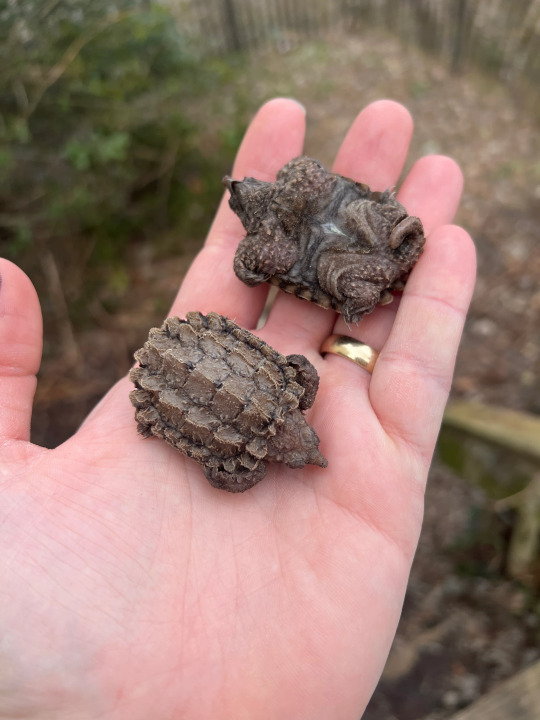
(Image ID: two baby alligator snapping turtles held in a person's hand. They are smaller than the person's palm, but otherwise look no different than the adults. One is on its back, displaying the small plastron. End ID)

(Image ID: alligator snapping turtles hatching in captivity. The eggs are small white spheres that look like ping-pong balls. The number 19 has been written on them in what appears to be sharpie. Several of the eggs have already hatched. In the middle of the picture, a turtle is pertially emerged from its egg. End ID
Alligator snapping turtles are classified as vulnerable by the IUCN. Their primary threat is habitat loss as wetlands are drained and dammed. They are also hunted and used as food by humans. This is common enough that some states have had to pass laws protecting the turtles. Despite being characterized as aggressive, alligator snapping turtles rarely attack humans and only in self-defense. Because they cannot retract into their shells, the turtles defend themselves by facing a potential threat with their mouths open as a warning. This has furthered its reputation as an aggressive animal. Because the turtles take so long to reproduce, restoring populations is a very slow process. Alligator snapping turtles are sometimes used as pets, though they need expert care due to their sheer size and the potential danger of handling them. Use in the pet trade has resulted in the turtles being introduced outside of their native range. They have become an invasive species on some places, notably in southern Africa.
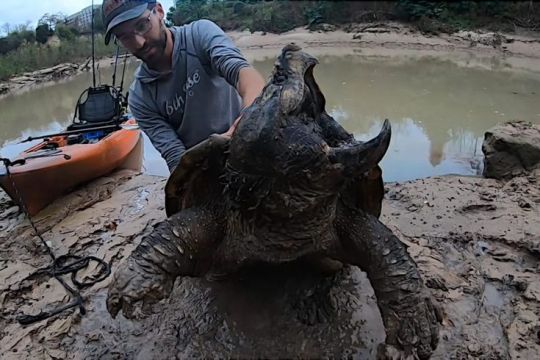
(Image ID: an alligator snapping turtle next to a human man. The human is holding it up by the front of the shell to show its size. End ID)
#wet beast wednesday#alligator snapping turtle#snapping turtle#turtle#freshwater biology#biology#ecology#zoology#reptile#animal facts
210 notes
·
View notes
Text

Another batch! they ended up eating the first clutch a few hours after I made the post- maybe they'll do better this round!
146 notes
·
View notes
Text
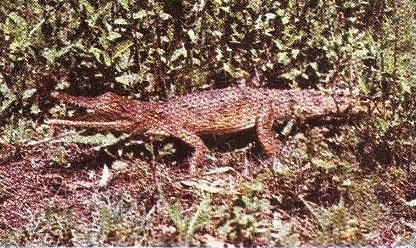
Australian freshwater crocodile
By: Unknown photographer
From: Dandy Gum Cards
1969
#today i gift you: a photo with approximately two pixels :)#australian freshwater crocodile#crocodile#crocodilian#reptile#1969#1960s#Dandy Gum Cards
60 notes
·
View notes
Photo
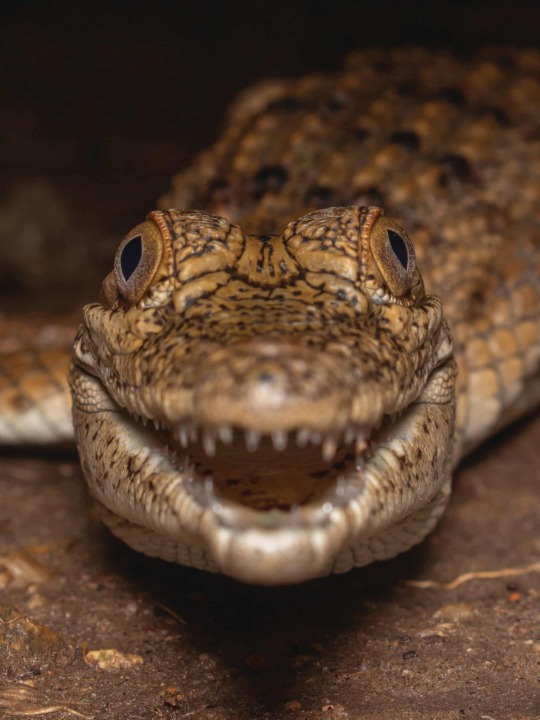
Freshwater crocodile. Location: Townsville, Queensland.
Photograph: Elliott Budd
#elliott budd#photographer#freshwater crocodile#crocodile#reptile#townsville#queensland#australia#nature
122 notes
·
View notes
Text
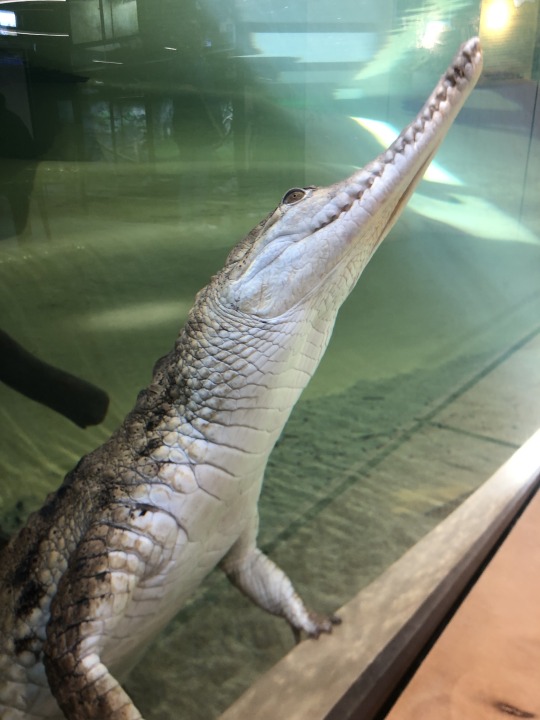

look at this Funky crocodile ft. This turtle who is looking very intently
#I think her name is Cleo? We have two crocodiles and I can’t tell them apart lol#reptiblr#reptile#crocodile#turtle#freshwater crocodile#long-necked turtle#reptile wednesday#lizard
63 notes
·
View notes
Photo

American Alligator babies, Brazos Bend State Park, Fort Bend county, TX, USA.
photograph by hoiman01 | inaturalist CC
169 notes
·
View notes
Text
If this isn't cute then I don't know what is

3 notes
·
View notes
Photo

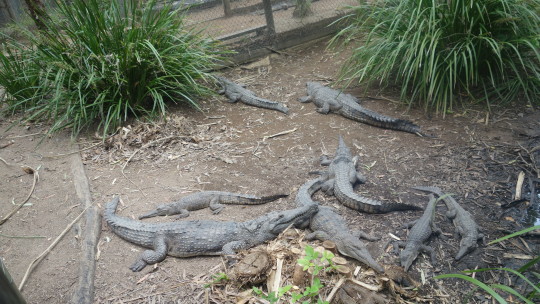
Freshwater crocodiles at Billabong Sanctuary near Townsville, QLD, Australia
8 notes
·
View notes
Photo
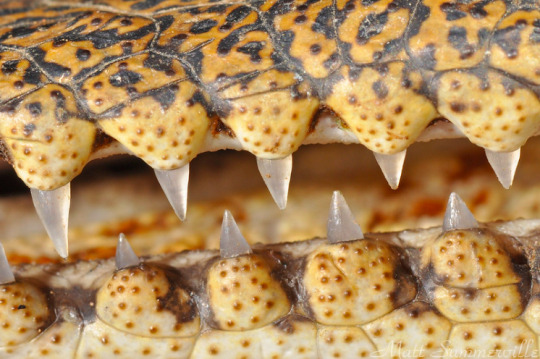
The teeth of a freshwater crocodile (Crocodylus johnstoni). Kununurra, Western Australia.
Photo by Matt Summerville [x]
4 notes
·
View notes
Photo
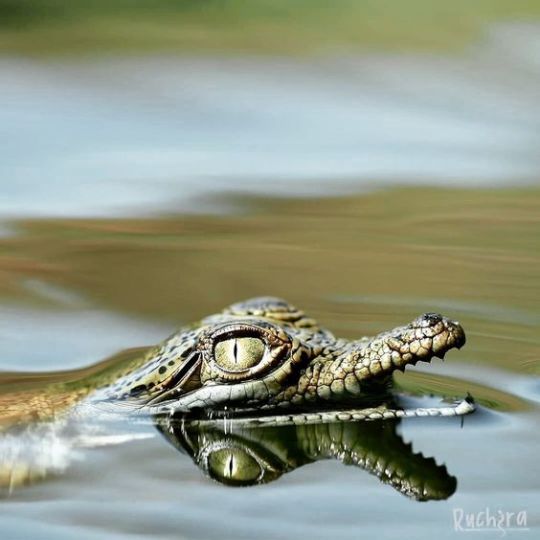
Baby Australian freshwater crocodile (Crocodylus johnstoni)
📸@rusomaweera
0 notes
Text
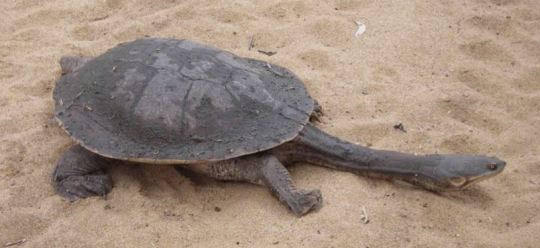
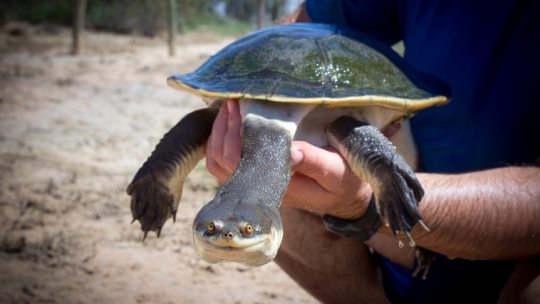

Abroad with the Broad Shelled Turtle
Chelodina expansa, more commonly known as the broad shelled turtle, is one of the largest freshwater turtles in Australia. The length of their shells can reach up to 50 cm (19.6 in), and their neck accounts for an additional 60-80% of their total length. Because of this length, C. expansa tucks its head in sideways as opposed to pulling it directly into its shell. At maximum, females reach a mass of 6 kg (13.2 lbs), while males only typically weigh about 4 kg (8.8 lbs). The top of the shell, or carapace, is dark brown or green, while the underside is a light cream; the same is true for the broad shelled turtle's head, neck, and legs. The feet are webbed, and have large claws which help adults to dig or fend off predators.
While they spend the winter buried in the mud, the broad shelled turtle is most active during the summer months, from November to March. During this time they are almost entirely aquatic, rarely emerging from the water even to bask. This species lives throughout the river basins of eastern Australia, and can be found in rivers, dams, lakes, and wetlands with plenty of vegetation cover. C. expansa is entirely carnivorous, feeding on crustaceans, aquatic insects, fish, and frogs via ambush, and carrion whenever it can find it. To locate prey, they have a keen sense of smell. Adults are not usually predated upon due to their thick shells and sharp claws, but eggs and juveniles are often prey for foxes, dingos, birds, rakalai, and large fish.
C. expansa nests in the winter, beginning in late February or March. Outside the mating season, individuals are generally solitary, but aggressive territoriality has not been observed. When mating time roles around, males seek out females to mate with; following the encounter, the female climbs out onto the bank and digs a nest for a clutch of anywhere from 5 to 28 eggs. To seal the nest, she then slams her body into the re-piled sand and mud, compacting it into a plug that will remain intact until the following year.
Incubation takes about 360 days, though some nests have been recorded as hatching at 500 days; this process is exceptionally slow due to the two periods of diapause, or developmental delays, that embryos pass through in order to survive the winter. Juveniles hatch in the spring, and emerge from the nest at the first heavy rain. It's unknown how long these turtles can live in the wild, but given their slow growth rate and adult invulnerability it's likely that they can live in excess of 20 years.
Conservation status: The IUCN consideres the broad shelled turtle to be Near Threatened, due primarily to habitat loss and high rates of nest predation by introduced foxes.
If you like what I do, consider leaving a tip or buying me a kofi!
Photos
Claire Treilibs
Catherine Heuzenroeder
Shanna Bignell via iNaturalist
#broad shelled turtle#Testudines#Chelidae#snake-necked turtles#Austro-South American side-neck turtles#side-neck turtles#turtles#reptiles#freshwater reptiles#river reptiles#lake reptiles#wetland reptiles#Oceania#Australia#East Australia
252 notes
·
View notes
Text
Wet Beast Wednesday: Nile crocodile
Humans in general often have a fear of large reptiles. This may have an evolutionary advantage as it helped our smaller ancestors avoid large predators like snakes and crocodiles. Whatever the reason, the fear has entered into many belief systems and one common feature in many myths, legends, and religions of Africa and the Middle East is the Nile crocodile. While their reputation as man-eaters is somewhat exaggerated, Nile crocs are one of the most dangerous reptiles to humans, with only the saltwater crocodile matching them in human deaths. However, like most animals, the danger can be avoided if you know what to do and what not to do.
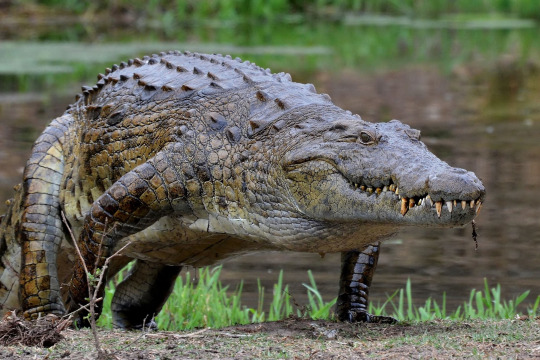
(Image ID: a Nile crocodile walking on land, seen from the front. It is a quadruped with short limbs on the side of its body, scaly skin, and an elongated set of jaws with protruding teeth. The tail is out of view. Its body is dark brown on top and yellowish on the sides. End ID)
The Nile crocodile, Crocodylus niloticus, is the second largest crocodilian and (depending on how you measure some snakes) possibly the second largest living reptile after the saltwater crocodile. Average adult males (which are larger than females) reach between 3.5 and 5 meters (11.5 to 16.5 ft) and and 255 to 270 kg (500 to 1,650 lbs), but some specimens have gotten considerably larger, with the largest confirmed size on record being a male who broke the scale at 6.45 m (21 ft) and between 1,043 and 1,089 kg (2,300 - 2,400 lbs). Nile crocodiles are fairly typical crocodilians. They are large quadrupeds with scaly skin covered with scutes and osteoderms, long and powerful jaws, and eyes, ears, and nostrils on top of their heads. Their eyes are protected with transparent eyelids called nictitating membranes and their skin has many sense organs whose purpose is poorly understood but may help detect changes in water pressure. While on land, the crocodiles are fairly slow and ungainly, but they can swim at high speeds when needed. The broad jaws and powerful muscles give the crocodiles an enormous bite force, being able to bite down on prey with 22 kilonewtons of force. For comparison, humans max out at about 0.7 kilonewtons. This force can also be continuously applies for long periods of time, allowing the crocodiles to hold struggling prey in their mouth and drag it underwater. Famously, though crocodilians can close their jaws with incredible force, the muscles for opening their jaws are much weaker and can be held shut with a person's bare hands or some duct tape. They have dark bronze scales on the back and lighter yellow scales on the sides and underbelly, marked with dark spots. The color darkens as the animal ages. As with all crocodilians, the Nile crocodile has a four-chambered heart that is highly efficient at oxygenating blood and is similar to the hearts of birds. Crocodilians and birds are actually more closely related to each other than they are to anything else still alive. All crocodilians have high lactic acid levels in their blood. This allows them to sit motionless for long periods of time, but increased levels due to overexertion can kill them.

(Image ID: a Nile crocodile resting in the water just offshore, with most of its body still visible. This one is a lighter brown. Its tail is visible. It is long and thick, with two rows of scutes running down it. Its mouth is open. End ID)
Nile crocodiles are found throughout a large portion of Africa and are the most widespread crocodiles, with only the saltwater crocodile having a wider distribution. Their current range is smaller than it used to be and now it is known that areas there were once thought to be part of the Nile croc's range are actually home to the similar species known as the West African crocodile. The West African crocodile was formerly believed to be the same species as the Nile crocodile and was only reclassified in 2011. Their habitat is freshwater lakes, waterways, and swamps throughout Africa. They can tolerate brackish or marine water, but but prefer fresh water. Like other crocodilians, Nile crocs are largely sedentary ambush predators. They can remain motionless for long periods of time, often submerged with only their eyes, ears, and nostrils exposed. A crocodile submerged like this can easily be mistaken for a log. When prey comes close, the crocodile will lunge forward and bite down. Larger prey that is not killed outright will be dragged into the water and drowned. Almost uniquely among crocodilians, nile crocodiles are known to hunt on land. They still employ ambush tactics, usually hiding in brush along paths at night and attacking animals passing by. They have even been known to try to steal kills from land predators and get into tug-of-war battles with lions over pieces of carrion. While clips of a massive crocodile leaping out of the water to drag a zebra to its doom make for entertaining documentaries, about 70% of a Nile crocodile's diet is composed of fish. As an individual grows, larger land animals will make up more of its diet. Nile crocs have been known to cooperate to herd fish into tight spots where they are easier to catch and eat. While famous for their skill and hunting and killing prey, Nile crocodiles are anything but voracious eaters. Their stomachs are pretty small for their size, only around the volume of a basketball. They can also go long periods of time between meals, sometimes several months without signs of starvation. Nile crocodiles are a classic case of apex predators. An adult Nile crocodile has no natural predators, though young ones do get attacked and eaten by larger predators, including other crocodiles. Curiously, they are known to swallow stones. Swallowing stones, known as gastroliths, it a well-known behavior in the animal kingdom. They are usually held in the digestive tract and used to help grind up tough food. Most species that use gastroliths are herbivores or omnivores who use them to help grind up tough plant matter, so it's not clear why the carnivorous crocodiles need gastroliths.

(Image ID: a nile crocodile's had visible above water. Its mouth is open and in it is a silvery fish known as a tilapia. End ID)
youtube
(Video ID: a clip from the BBC Earth showing a Nile crocodile successfully attacking a wildebeest. End ID)
When not attacking prey, Nile crocs are pretty sedentary. They can easily spend most of the day basking in the sun, behavior common to large reptiles who need a long time in the heat to warm their bodies enough to perform daily functions. While basking, they sit on land, often with their mouths open. The open mouths are vital for thermoregulation (a crocodile with its mouth sealed shut can overheat and die), but may also serve as a warning to others who may want to steal their spot. In the southernmost reach of their range, Nile crocodiles may wait out the cool, dry months of May to August by digging burrows and entering aestivation, a state similar to hibernation. Nile crocodiles are social creatures that live, bask, and hunt together. They follow a social order with the largest individual around (almost always an old male) being in charge and having first access to food and the best territory. Males are territorial and will try to force other males out of their range. Larger males will be able to maintain the best territories while smaller males are forced to live on the outskirts. Females are not territorial and will seek out the best male territories to live in. While territorial, crocs of all sizes will come together while basking and their interaction then are mostly peaceful. they are known to communicate through posturing, touch, and vocalizations. Males are known to compete over territory and while most of these competitions are settled through threat displays, they may escalate to violence.

(Image ID: four crocodiles resting on a sandy shoreline. End ID)
Territoriality is especially prominent during mating. The mating season begins around the beginning of the dry season and varies based on location. Males will signal for females with several noises, including bellowing, blowing water out of their noses, and slapping the water with their heads. Males will also attempt to drive other males away to reduce competition. When a female chooses a male, she will approach him and the pair rub their jaws together while making a warbling sound. Males like it rough, roaring and pining the females down, sometimes underwater, while mating. Most males will only mate with a single female each year, though some particularly successful males in certain regions will can multiple mates each year. After two months, the female lays her eggs. While most crocodilians incubate their eggs in piles of rotting leaves, Nile crocodiles use sandy banks or beaches. The female digs a nest, lays up to 80 eggs in it, then buries the eggs. The heat of the sun is used to incubate the eggs and to determine the sex of the offspring. Eggs incubated between 31.7 and 34.5 degrees C will be male. All others will be female. Nests used to be laid extremely close to each other, but but to increased disturbances along the nesting sites, this has become rare. During the incubation period, the mother guards the nest continuously, only leaving to avoid overheating by resting in the shade or entering the water. The father also plays a role, patrolling the area around the nest to drive away predators who would eat the eggs. Incubation lasts about 90 days and the female usually will not eat during this time. The hatchlings will make chirping noises before hatching to signal to the mother that she needs to dig out the nest. Once uncovered, the mother may use her jaws to crack the eggs and assist hatching. Hatchings start at around 280 mm (11 in) long and 70 grams (2.5 oz) and will increase by that rate for the first few years. The mother will protect her offspring for up to two years, often carrying them on her back or in her mouth or throat pouch to keep them safe from predators. The juveniles feed on insects for the first few years of life. Even after leaving their mother, hatchlings will often live in groups until they are large enough to not have to worry about predators. It is estimated that only 10% of eggs hatch and 1% of hatchlings survive to adulthood. Sexual maturity is reached at around 11 to 12 years and the maximum lifespan is estimated to be 70 to 100 years.

(Image ID: a Nile crocodile mother standing at the edge of her nest, a pit in the ground. Multiple white eggs are visible, as are newly-hatched crocodiles, which are far smaller version of an adult. End ID)

(Image ID: Nile crocodile eggs hatching. Four eggs are visible and two are actively hatching, with only the hatchling's heads having emerged. Two other crocodiles have already hatched. End ID)
Nile crocodiles are threatened by habitat loss, pollution, prey loss, bycatch, and human hunting. From the 1940s to the 60s, Nile crocodiles were hunted in massive numbers for the leather trade and were near extinction until new laws, international trade regulations, and conservation efforts largely stopped the hunting efforts. Despite this, their population has not returned to pre-hunting levels and they have been extirpated from many locations. Poaching still happens, as does hunting due to their perceived status as man-eaters, which is actively hindering conservation efforts. Like with sharks, the public image of an animal as being dangerous to humans directly harms its survivability and conservation efforts. Loss of habitat and suitable nesting sites due to damming and other human-caused changes to wetlands have also damaged crocodile populations. An invasive plant, Chromolaena odorata, is harming the crocodiles due to it growing out of control in nesting grounds. The shade from the plants keeps the sun from warming the eggs, causing them to die. Nile crocodiles and saltwater crocodiles are responsible fro the vast majority of attacks on humans and it is estimated that Nile crocs may be responsible for hundreds of deaths (most of them unreported) a year. Only the largest individuals pose a threat to adult humans, though children are at risk to smaller crocs. In fact, Nile crocodiles kill more humans per year through direct attacks than any other wild animal. Those numbers are still dwarfed by deaths due to disease spreading animals, animals acting in self-defense, or attacks or injuries from domesticated animals. For the most part, the crocodiles do not seem to target humans, the number of attacks comes from humans and the crocodiles both living near the water's edge and the crocodiles' nature as generalist predators of large animals. People who study and interact with the crocodiles report that if the right precautions are taken, the danger from being around the animals is negligible and many people and groups have tried to spread safety precautions, especially to poor and remote areas where attacks are likely the most common.

(Image ID: several juvenile Nile crocodiles in a tank being fed. Someone is using a grabber on a stick to drop meat into the tank. Four of the crocodiles are rearing out of the water to get the food. End ID)
#wet beast wednesday#nile crocodile#crocodile#crocodilian#africa#reptile#freshwater biology#freshwater ecology#biology#zoology#ecology#images#image described#cw mentions of death#animal attack#animal facts#Youtube
22 notes
·
View notes
Text

My little slice of Peru
75 notes
·
View notes
Text

Swamp.
.....
Pantano.
#fantasia#coloredpencil#coloredpencils#creature#criatura#fantasy#fantasycreature#forestfantasy#freshwater#monster#monstruo#reptil#reptile#swamp#traditionalart#traditionaldrawing
1 note
·
View note
Photo
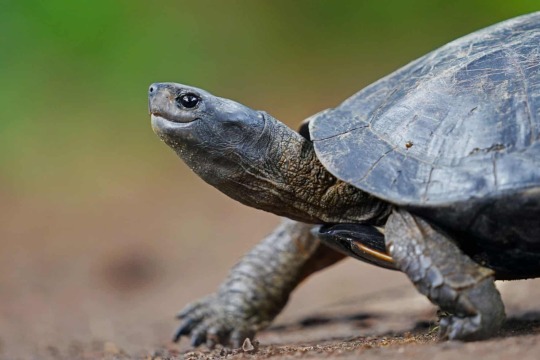
An Indian black turtle was seen in Kelaniya, Sri Lanka. The Indian black turtle (Melanochelys trijuga) also known as the Indian pond terrapin, is a species of medium-sized freshwater turtle found in South Asia
Photograph: Thilina Kaluthotage/NurPhoto/REX/Shutterstock
#thilina kaluthotage#photographer#nurphoto#rex#shutterstock#indian black turtle#turtle#reptile#kelyaniya#sri lanka#animal#melanochelys trijuga#indian pond terrapin#freshwater turtle#south asia#nature
39 notes
·
View notes